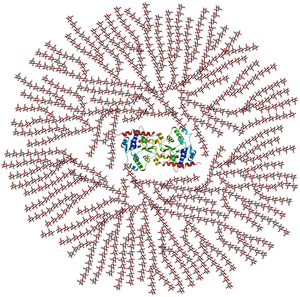Healthy eating habits/Preparation for Game Day Eating
This advice article is designed for people wanting to achieve effective eating habits in the days leading up to a sporting competition. For simplicity this article will target amateur AFL football players in their 20s, who have just moved out of home and are interested in improving their general eating habits as well. Though this advice can be stretched to many other similar sports at a range of ages. The difference between general healthy eating and sport nutrition practices will be explained. The target population for this education material highlighted that they would like some specific tips on how to eat healthy on a budget; lentils and beans were of specific interest.

As per the diagram to the right, this article will use the example of a team that trains Tuesday and Thursday evenings and plays in a competitive competition on Saturday afternoons.
Carbohydrate loading basics
[edit | edit source]Carbohydrate loading is the increase in consumption of carbohydrate for a limited period of time leading up to a sporting competition. It is most optimally achieved by starting 2 days before game day, setting aside meal times that are dedicated to 'carb-loading', which means eating a meal that is mostly made up of carbohydrate foods. These types of foods can include bread, rice, pasta, muesli, cereal and dry wheat biscuits.
Why carb-load?
[edit | edit source]
See that big spider looking thing over to the right? That's how energy is stored in you muscles, each little dot represents a piece of glucose (a sugar used for energy) that is broken off when your body's energy stores are running low which happens during exercise. The whole structure is called glycogen, the dangly legs of the glycogen can grow longer and longer when a person is carb-loading. This can provide plentiful stores of energy and will stop you feeling tired too soon. It is the one source of energy and fuel that we can effectively manipulate, through food, to perform at our best on sporting days.
During these 'carb-loading' days, there are a few things to consider
[edit | edit source]- Usually it consists of a pasta or rice based dish with any vegetables, herbs and spices for flavour. (Tip: Keep it to a tomato or vegetable based sauce rather than a creamy carbonara type of sauce)
- Keep a good amount of time, at least 2 hours, before you start any exercise to allow for complete emptying of the stomach.
- Keeping meals during carb loads: low fat, low protein and low fibre to aid digestion and to avoid feeling full prematurely.
- Keeping Friday as a rest day, with little exercise to avoid using up the stores of muscle energy (glycogen) before the game day
Protein
[edit | edit source]Protein is important to consider for muscle maintenance in sports nutrition. Eating low amounts or poor sources of protein will not help maintain muscle and may even lead to the reduction of muscle bulk also known as 'muscle wasting'.
Remember:
- You should only increase your protein consumption to match your increased need once muscle has been gained.
- Be sure to include protein alongside carbs within 30 minutes after a game, this will help to avoid muscle wasting, when your body has no energy stores left your body might start using the protein from you muscle bulk instead!
How is general healthy eating different to game day preparation?
[edit | edit source]When preparing for game day it is recommended to choose food options that are low fat, low fibre and low protein; which you might recognise, goes against the grain of regular healthy eating advice. So of course, from Sunday through to Thursday afternoon before training these do not apply. During these days try and aim for the day’s worth of food diagram (‘Do you have room for all of this?’) which displays the minimum amounts of food required for one day.
Lentils
[edit | edit source]For those who are on a budget, lentils cross over into both vegetable and protein food groups, so there’s more bang for your buck! Examples include: chickpeas, red/green/black lentils, split peas, kidney beans and many more.
Remember:
- Lentils are very versatile and cheap, providing a source of fibre and protein.
- However they are not appropriate during a ‘carb load’ as its high fibre content can cause satiety (feeling satisfied and full from your meal).
- As a result, they can also cause uncomfortable bowel movements, if not met with adequate water consumption.
Some great resources:
